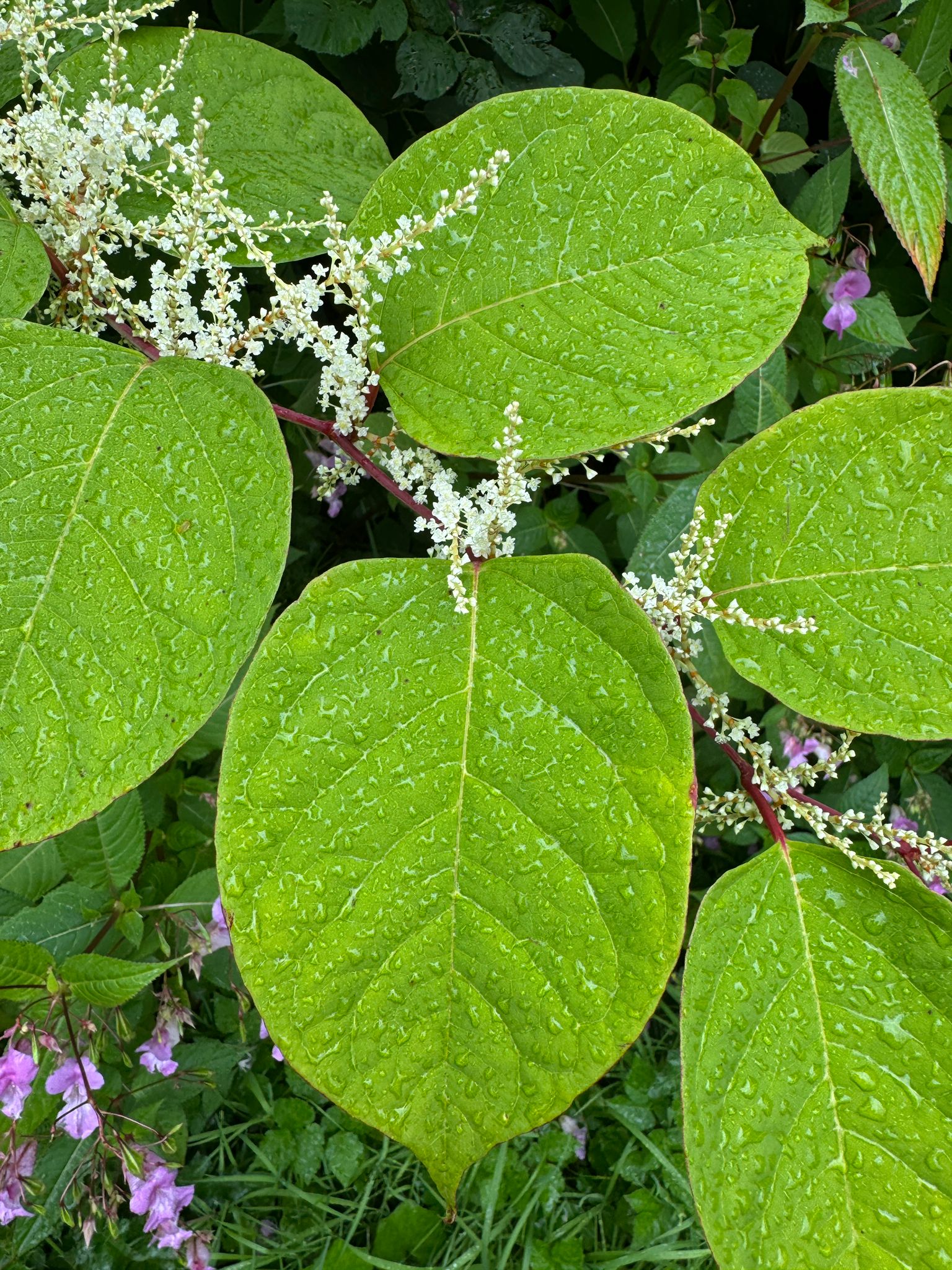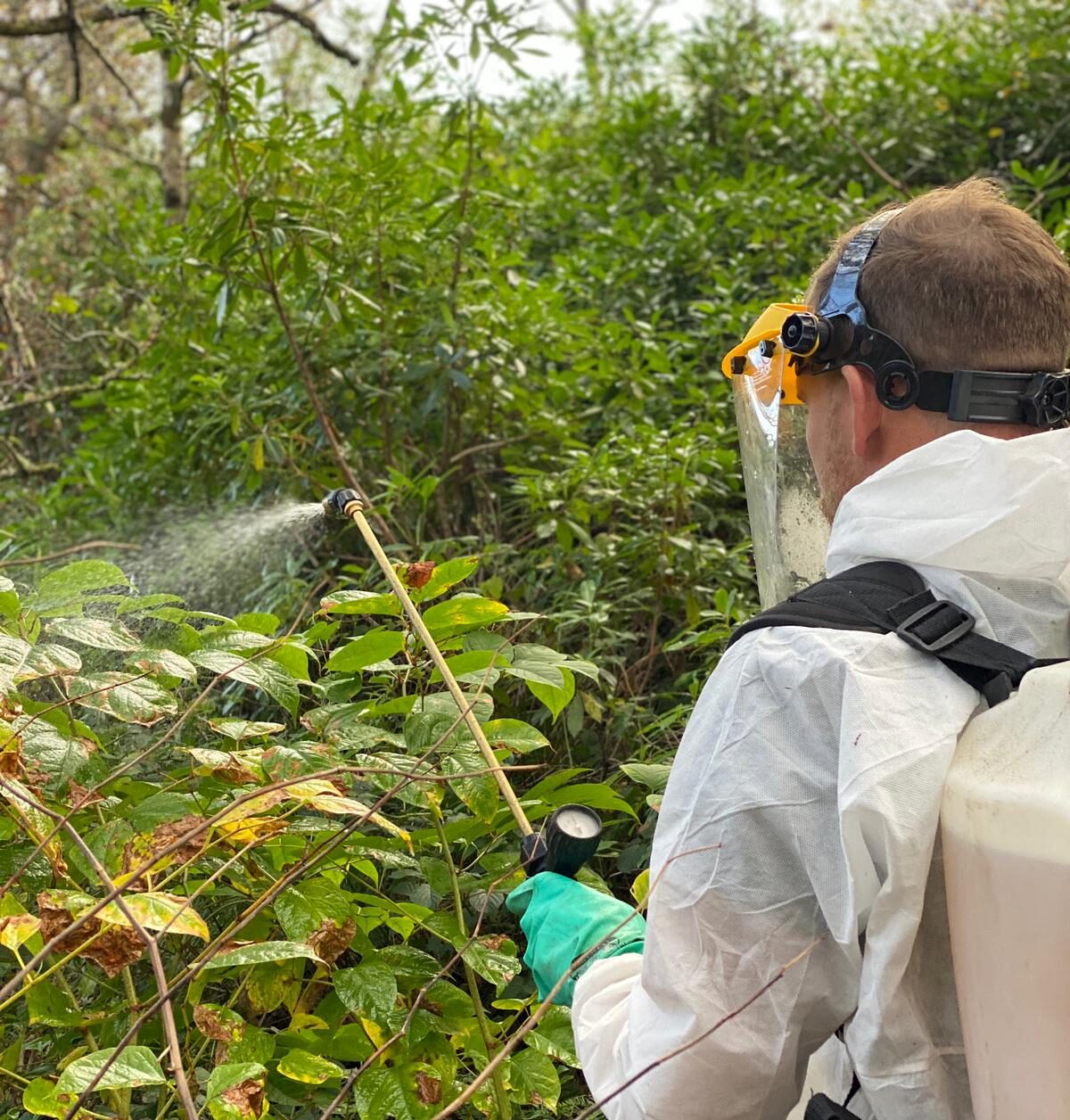Giant Rhubarb
Experts in Giant Rhubarb removal. Effective, safe treatment for Gunnera on residential and commercial land. Long-term solutions to control invasive growth.
What is Giant Rhubarb?
Giant Rhubarb (Gunnera manicata) is a large, invasive plant native to South America. Gunnera was introduced to the UK in the 19th century as an ornamental garden plant. It has since spread uncontrollably in wetland areas, particularly along rivers, ditches, and other damp habitats.
It has become a significant issue in parts of Scotland due to its rapid growth and aggressive spread. Often found along riverbanks and in wetlands, it can dominate the landscape, outcompeting native plants and altering ecosystems.
The plant’s large leaves can grow up to 2.5m in diameter, creating dense thickets that block light and restrict the growth of other vegetation.
How Does Giant Rhubarb Spread?
Giant Rhubarb spreads through both seeds and its extensive rhizome (root) system. The plant can produce thousands of seeds, which are dispersed by birds, water, and wind. Additionally, Gunnera’s rhizomes, or horizontal underground stems, can grow and spread to form new plants, with even small fragments capable of regenerating.
Issues Caused by Giant Rhubarb
Is it Safe to Eat Giant Rhubarb?
No. Giant Rhubarb is not like regular rhubarb and is not edible and is toxic to humans. It contains high levels of oxalic acid which can cause serious health problems if ingested.
What are the Environmental Risks?
Giant Rhubarb can dominate wetlands, blocking native species from thriving and causing biodiversity loss. Its dense growth can also increase the risk of flooding, as the plant obstructs water flow in drainage systems and watercourses. The large, fast-growing leaves shade out smaller plants, reducing plant diversity and preventing the regeneration of native species.
What is my Legal Responsibility?
Under the Wildlife and Countryside Act 1981, it is an offence to plant or allow Giant Rhubarb to spread in the wild. Property owners have a legal duty to manage its growth and prevent it from spreading to neighbouring land. Proper identification and control are vital to comply with these regulations and to avoid long-term damage.
Identification of Giant Rhubarb Throughout the Year
Seasonal Growth Cycle
- Spring: Fresh shoots appear from rhizomes, growing rapidly.
- Summer: Large, broad leaves fully develop, reaching their maximum size.
- Autumn: Flowering season; Gunnera produces small, greenish flowers.
- Winter: The plant dies back, leaving behind large, dead foliage that can still cause obstruction in watercourses
Detailed Giant Rhubarb Characteristics
- Stems: Thick, stout, and often covered with spines.
- Leaves: Huge, umbrella-shaped leaves up to 2.5m wide with prominent veins.
- Flowers: Red-green spiky heads, or cones of small flowers producing small reddish berries after pollination which finally turn into black seeds.
- Roots: Large, spreading rhizomes capable of producing new growth
Treatment and Control of Giant Rhubarb
How to Remove Wild Garlic
At JBB Knotweed Solutions Ltd, we provide expert treatment and removal services for Giant Rhubarb (Gunnera) across Scotland. Our team uses safe, effective methods tailored to the specific conditions of your site.
Our Treatment Methods
- Herbicidal Treatment: Targeted application of approved herbicides can be effective, especially when timed correctly in the plant’s growth cycle. Multiple treatments may be required over several seasons for full eradication.
- Mechanical/Manual Removal: In certain cases, cutting back foliage and excavating the rhizomes can be effective. All plant material is disposed of safely to prevent re-establishment of the plant.
Whether in domestic gardens, public spaces, or commercial land, we have the expertise to manage Giant Rhubarb effectively, providing long-term solutions for its control and removal.
Book a Survey
We can tell you if you definitely have Giant Rhubarb on your property and recommend the best course of action.
More from JBB Knotweed Solutions



